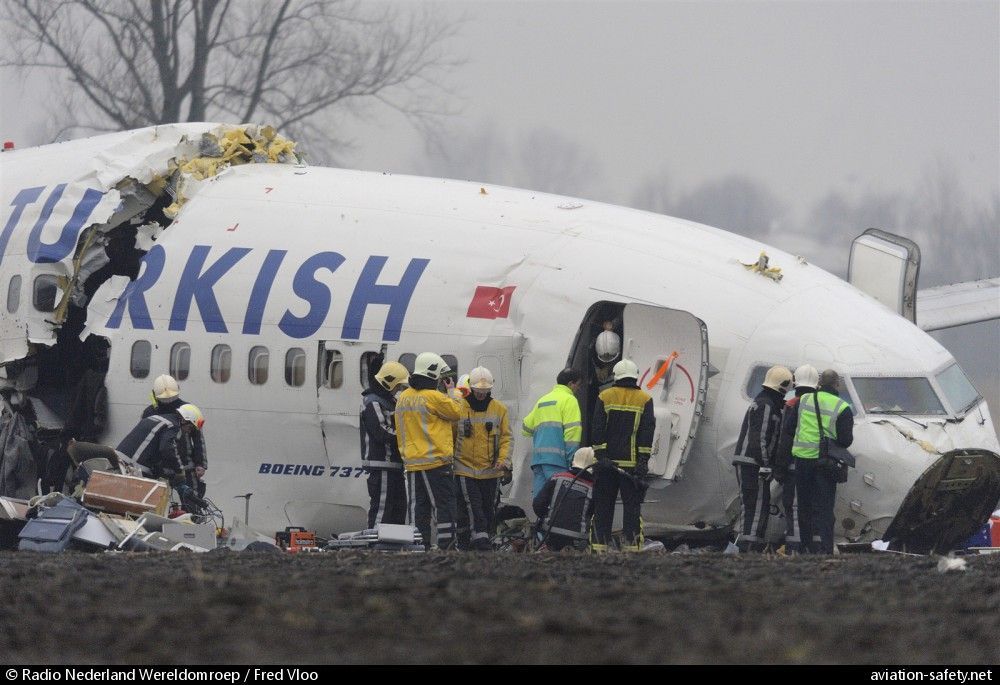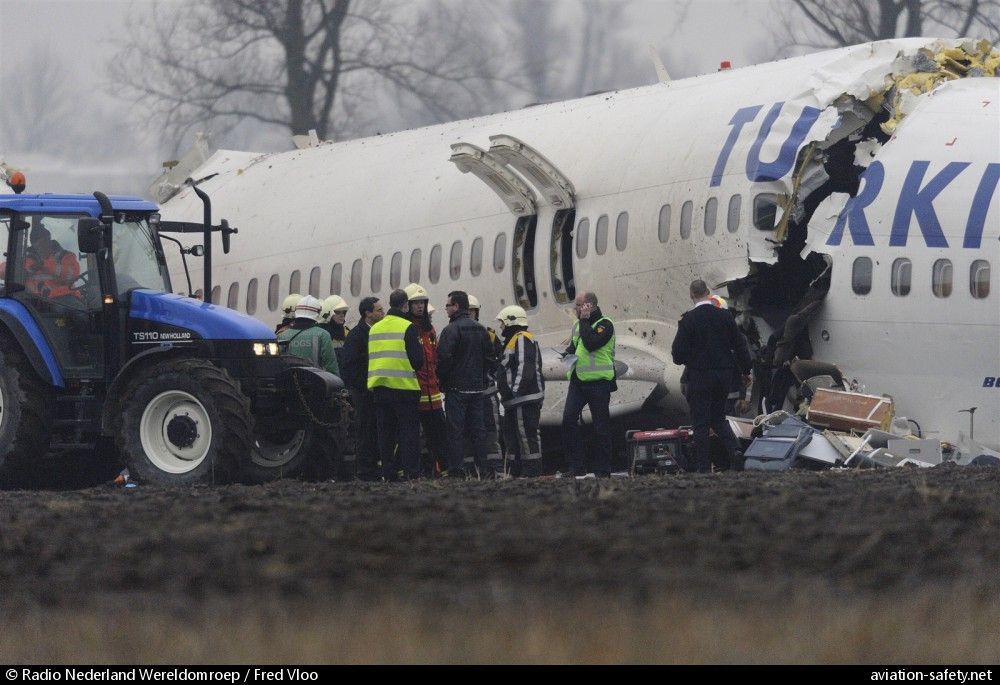ARFF Daily News
Published on:
Tuesday the 25th of February, 2025
A Delta flight from Atlanta was forced to turn around and evacuate after ‘haze’ was seen in the cabin
By Lauren Mascarenhas and Pete Muntean, CNN
A Delta Air Lines flight to Columbia, South Carolina, was forced to return to Hartsfield-Jackson Atlanta International Airport on Monday morning after a “haze” was observed inside the plane, according to officials.
The plane returned to the airport around 9 a.m. after the crew reported possible smoke in the flightdeck, according to the Federal Aviation Administration, which is investigating the incident.
The Boeing 717 aircraft, which was carrying 94 passengers, three flight attendants and two pilots, deployed slides on the runway during the evacuation, Delta told CNN.
“The flight crew followed procedures to return to Atlanta when a haze inside the aircraft was observed after departure,” a Delta spokesperson told CNN in a statement. “Nothing is more important than the safety of our customers and people, and we apologize to our customers for the experience.”
The airline said it is investigating the cause of the haze.
“When the plane took off it began to fill up with haze and (it) was hard to breathe at times,” Johnny, a passenger on the flight who asked for only his first name to be used, told CNN.
An emergency was declared to get priority handling from air traffic control, according to the airline.
Another passenger, Kristin Morris, told CNN haze began to fill the plane five to 10 minutes after taking off from Atlanta.
“A few of us passengers started to question why or what was going on. People started screaming ‘smoke, smoke, smoke,’” Morris said. “We were in the air for about 20 minutes, and it seemed to take a while before we landed.”
According to Morris, after everyone was evacuated from the plane they were put in a conference room as Delta tried to figure out what caused the haze. Morris said the passengers were eventually let go without receiving an answer.
After the plane returned to the airport, Atlanta Fire Rescue assisted in the deplaning of passengers and crew members, a spokesperson for Hartsfield-Jackson Atlanta International Airport said in a statement to CNN.
Video taken outside the plane shows passengers evacuating.
Delta said its teams would help customers rebook flights to their final destinations.
Hartsfield-Jackson Atlanta International Airport said the incident caused moderate impact to airport operations.
CNN’s Caroll Alvarado contributed to this report.
https://www.cnn.com/2025/02/24/us/delta-flight-haze-evacuation-emergency/index.html
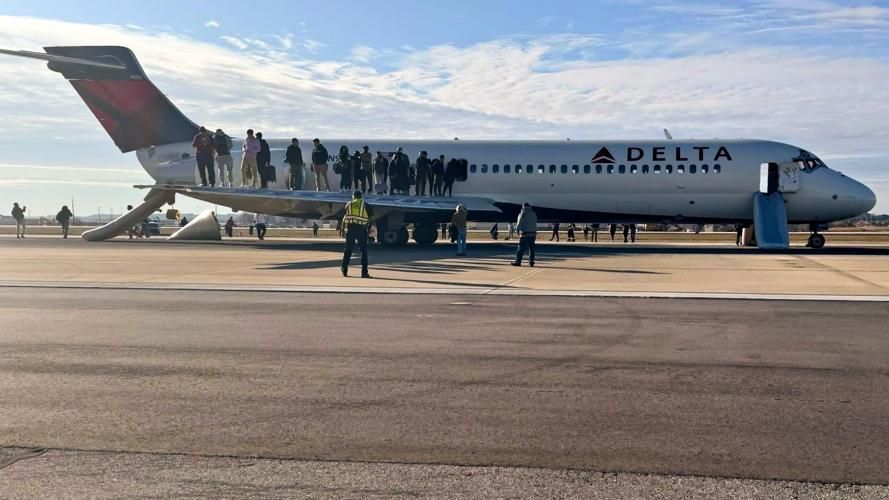


Small plane crashes, catches on fire with 2 on board in Tarrant County
By Gerardo Martinez
AZLE, Texas - Authorities are investigating a small plane crash and subsequent fire with two people on board in Tarrant County.
What we know:
The crash happened Monday around 2:45 p.m. in a field behind several homes in the 4000 block of Silver View Lane in an unincorporated area of Tarrant County near Azle.
The fire department says two people on board a Starduster 2 airplane got out safely with minor injuries.
The plane caught on fire and was extinguished by firefighters. However, the aircraft was destroyed.
Video from SKY shows the charged remains of the small plane.
Lake Worth Fire says it's a privately-owned plane and is not a military aircraft.
The Tarrant County Sheriff's Office, the FAA and the NTSB are taking over the investigation.
What we don't know:
It's unclear what caused the small plane to go down.
We don't know if the fire was caused by the impact or if it was already on fire before.
It's also unclear who owned the plane.
https://www.fox4news.com/news/aircraft-down-near-azle
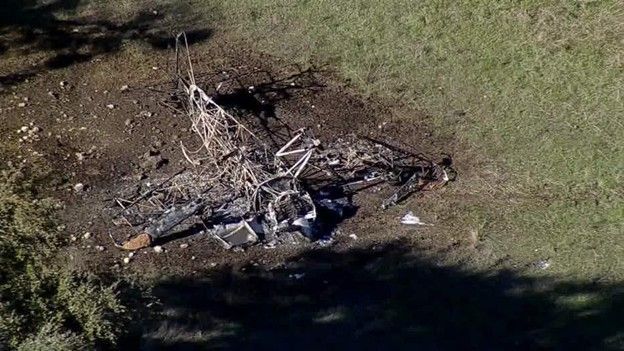

Small plane makes emergency landing at Eagle River Union Airport Monday morning
By Mitchell Skurzewski
EAGLE RIVER, Wis. (WJFW) — A small plane made an emergency landing at Eagle River Union Airport on Monday. No one was injured.
At about 10:25 a.m. the Vilas County Communications center received a call from the Minneapolis Flight Center that a small plane was damaged in flight and needed to make an emergency landing at the Eagle River airport, according to a Facebook post by the Eagle River Police Department.
The release also said, the plane lost part of its landing gear in flight but the plane was able to safely land without further incident and no one was injured.
Emergency services were dispatched out to the airport and were on scene when the plane arrived.
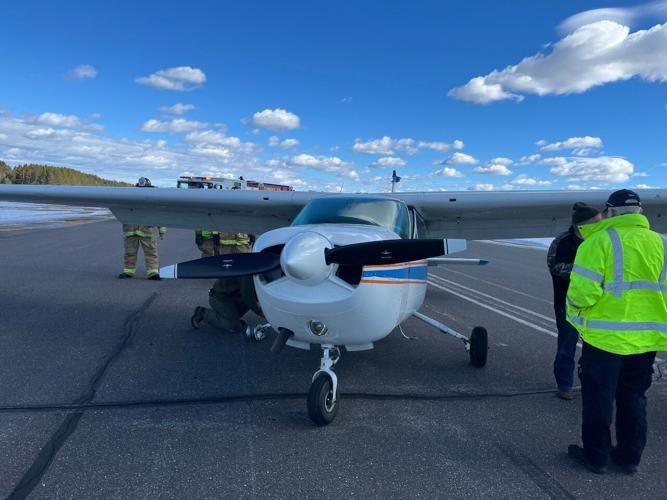
Medical helicopter crashes near Wilmington, three people sent to the hospital
According to Novant Health, three team members were on the helicopter at the time of the crash and are being transported to the hospital for evaluation.
By WECT
Novant Health confirmed there was an AirLink incident Monday evening.
According to Novant Health, three team members were on the helicopter at the time of the crash and are being transported to the hospital for evaluation. There were no patients on the aircraft.
A spokesperson for Novant Health sent WECT News the following statement:
"We can confirm there was an AirLink incident this evening. Three team members were on board the helicopter and are being transported for evaluation. There were no patients on board. We are focused on the well-being of the flight crew, their families and our team members. We are still in the initial response and information gathering phase at this time, and have limited information to share. We appreciate the prompt assistance from all area first responders who are assisting us tonight."
In a statement, New Hanover County Fire and EMS confirmed they received a report of a downed aircraft near Sidbury Road at 7:47 p.m. on Feb. 24.
"In response, multiple agencies—including New Hanover County Fire Rescue and the Sheriff’s Office—were dispatched. By 9:30 PM, all three occupants were safely extricated and transported to Novant Health," a spokesperson with the department stated.
Previous Coverage: A Novant AirLink Helicopter has crashed near the New Hanover/Pender County line on Holly Shelter Road.
Novant Health confirmed there was an AirLink incident Monday evening. WRAL News reported the crash Monday night.
According to Novant Health, three team members were on the helicopter at the time of the crash and are being transported to the hospital for evaluation. There were no patients on the aircraft.
It has been reported that some may have minor injuries. EMS was seen carrying away passengers on a stretcher.
For updates, go to WECT.com.
https://www.wral.com/story/medical-helicopter-crashes-near-wilmington-three-people-sent-to-the-hospital/21877320/
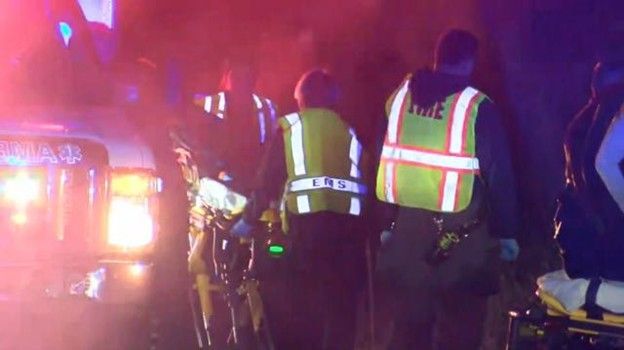
NTSB Final Report: Cirrus Design Corp SR22T
Loss Of Directional Control During The Takeoff Roll For Undermined Reasons
Location: Lubbock, Texas Accident Number: CEN25LA068
Date & Time: January 3, 2025, 10:40 Local Registration: N725DC
Aircraft: Cirrus Design Corp SR22T Aircraft Damage: Destroyed
Defining Event: Loss of control on ground Injuries: 2 Minor
Flight Conducted Under: Part 91: General aviation - Personal
Analysis: The pilot reported that during the takeoff roll, at 50 knots, he felt a quick shake/wiggle and the airplane turned hard left due to a left main landing gear tire failure. The pilot stated that he reduced engine power and applied right rudder pedal control input as much as possible, but the airplane continued to pull left. The airplane exited the left side of the runway and impacted trees. The airplane came to rest on its left side and a postcrash fire ensued that destroyed the airplane. The postcrash fire precluded any examination to determine the cause of the accident.
Probable Cause and Findings: The National Transportation Safety Board determines the probable cause(s) of this accident to be -- The loss of directional control during the takeoff roll for undermined reasons that resulted in an impact with trees.
FMI: www.ntsb.gov

Today in History
16 Years ago today: On 25 February 2009 THY Turkish Airlines flight 1951, a Boeing 737-800, crashed while on approach to Amsterdam-Schiphol Airport, Netherlands, killing 9 occupants; 126 survived the accident.
Date: Wednesday 25 February 2009
Time: 10:26
Type: Boeing 737-8F2
Owner/operator: THY Turkish Airlines
Registration: TC-JGE
MSN: 29789/1065
Year of manufacture: 2002
Engine model: CFMI CFM56-7B26
Fatalities: Fatalities: 9 / Occupants: 135
Other fatalities: 0
Aircraft damage: Destroyed, written off
Category: Accident
Location: 1,5 km N of Amsterdam-Schiphol International Airport (AMS) - Netherlands
Phase: Approach
Nature: Passenger - Scheduled
Departure airport: Istanbul-Atatürk Airport (ISL/LTBA)
Destination airport: Amsterdam-Schiphol International Airport (AMS/EHAM)
Investigating agency: Dutch Safety Board
Confidence Rating: Accident investigation report completed and information captured
Narrative:
THY Turkish Airlines flight 1951, a Boeing 737-800, crashed while on approach to Amsterdam-Schiphol Airport, Netherlands, killing 9 occupants; 126 survived the accident.
Flight TK1951 departed Istanbul-Atatürk International Airport (IST) for a flight to Amsterdam-Schiphol International Airport (AMS), The Netherlands. The flight crew consisted of three pilots: a line training captain who occupied the left seat, a first officer under line training in the right seat and an additional first officer who occupied the flight deck jump seat. The first officer under line training was the pilot flying. The en route part of the flight was uneventful.
The flight was descending for Schiphol and passed overhead Flevoland at about 8500 ft. At that time the aural landing gear warning sounded.
The aircraft continued and was then directed by Air Traffic Control towards runway 18R for an ILS approach and landing. The standard procedure for runway 18R prescribes that the aircraft is lined up at least 8 NM from the runway threshold at an altitude of 2000 feet. The glidepath is then approached and intercepted from below. Lining up at a distance between 5 and 8 NM is allowed when permitted by ATC.
Flight 1951 was vectored for a line up at approximately 6 NM at an altitude of 2000 feet. The glide slope was now approached from above.
The crew performed the approach with one of the two autopilot and autothrottle engaged.
The landing gear was selected down and flaps 15 were set. While descending through 1950 feet, the radio altimeter value suddenly changed to -8 feet. And again the aural landing gear warning sounded.
This could be seen on the captains (left-hand) primary flight display. The first officers (right-hand) primary flight display, by contrast, indicated the correct height, as provided by the right-hand system. The left hand radio altimeter system, however, categorised the erroneous altitude reading as a correct one, and did not record any error. In turn, this meant that it was the erroneous altitude reading that was used by various aircraft systems, including the autothrottle. The crew were unaware of this, and could not have known about it. The manuals for use during the flight did not contain any procedures for errors in the radio altimeter system. In addition, the training that the pilots had undergone did not include any detailed system information that would have allowed them to understand the significance of the problem.
When the aircraft started to follow the glidepath because of the incorrect altitude reading, the autothrottle moved into the retard flare mode. This mode is normally only activated in the final phase of the landing, below 27 feet. This was possible because the other preconditions had also been met, including flaps at (minimum) position 15. The thrust from both engines was accordingly reduced to a minimum value (approach idle). This mode was shown on the primary flight displays as RETARD. However, the right-hand autopilot, which was activated, was receiving the correct altitude from the right-hand radio altimeter system. Thus the autopilot attempted to keep the aircraft flying on the glide path for as long as possible. This meant that the aircrafts nose continued to rise, creating an increasing angle of attack of the wings. This was necessary in order to maintain the same lift as the airspeed reduced.
In the first instance, the pilots only indication that the autothrottle would no longer maintain the pre-selected speed of 144 knots was the RETARD display. When the speed fell below this value at a height of 750 feet, they would have been able to see this on the airspeed indicator on the primary flight displays. When subsequently, the airspeed reached 126 knots, the frame of the airspeed indicator also changed colour and started to flash. The artificial horizon also showed that the nose attitude of the aircraft was becoming far too high. The cockpit crew did not respond to these indications and warnings. The reduction in speed and excessively high pitch attitude of the aircraft were not recognised until the approach to stall warning (stick shaker) went off at an altitude of 460 feet.
The first officer responded immediately to the stick shaker by pushing the control column forward and also pushing the throttle levers forward. The captain however, also responded to the stick shaker commencing by taking over control. Assumingly the result of this was that the first officers selection of thrust was interrupted. The result of this was that the autothrottle, which was not yet switched off, immediately pulled the throttle levers back again to the position where the engines were not providing any significant thrust. Once the captain had taken over control, the autothrottle was disconnected, but no thrust was selected at that point. Nine seconds after the commencement of the first approach to stall warning, the throttle levers were pushed fully forward, but at that point the aircraft had already stalled and the height remaining, of about 350 feet, was insufficient for a recovery.
According to the last recorded data of the digital flight data recorder the aircraft was in a 22° ANU and 10° Left Wing Down (LWD) position at the moment of impact.
The airplane impacted farmland. The horizontal stabilizer and both main landing gear legs were separated from the aircraft and located near the initial impact point. The left and right engines had detached from the aircraft.
The aft fuselage, with vertical stabilizer, was broken circumferentially forward of the aft passenger doors and had sustained significant damage. The fuselage had ruptured at the right side forward of the wings. The forward fuselage section, which contained the cockpit and seat rows 1 to 7, had been significantly disrupted. The rear fuselage section was broken circumferentially around row 28.
The Dutch Safety Board has reached the following main conclusion:
During the accident flight, while executing the approach by means of the instrument landing system with the right autopilot engaged, the left radio altimeter system showed an incorrect height of -8 feet on the left primary flight display. This incorrect value of -8 feet resulted in activation of the retard flare mode of the autothrottle, whereby the thrust of both engines was reduced to a minimal value (approach idle) in preparation for the last phase of the landing. Due to the approach heading and altitude provided to the crew by air traffic control, the localizer signal was intercepted at 5.5 NM from the runway threshold with the result that the glide slope had to be intercepted from above. This obscured the fact that the autothrottle had entered the retard flare mode. In addition, it increased the crews workload. When the aircraft passed 1000 feet height, the approach was not stabilised so the crew should have initiated a go around. The right autopilot (using data from the right radio altimeter) followed the glide slope signal. As the airspeed continued to drop, the aircrafts pitch attitude kept increasing. The crew failed to recognise the airspeed decay and the pitch increase until the moment the stick shaker was activated. Subsequently the approach to stall recovery procedure was not executed properly, causing the aircraft to stall and crash.
